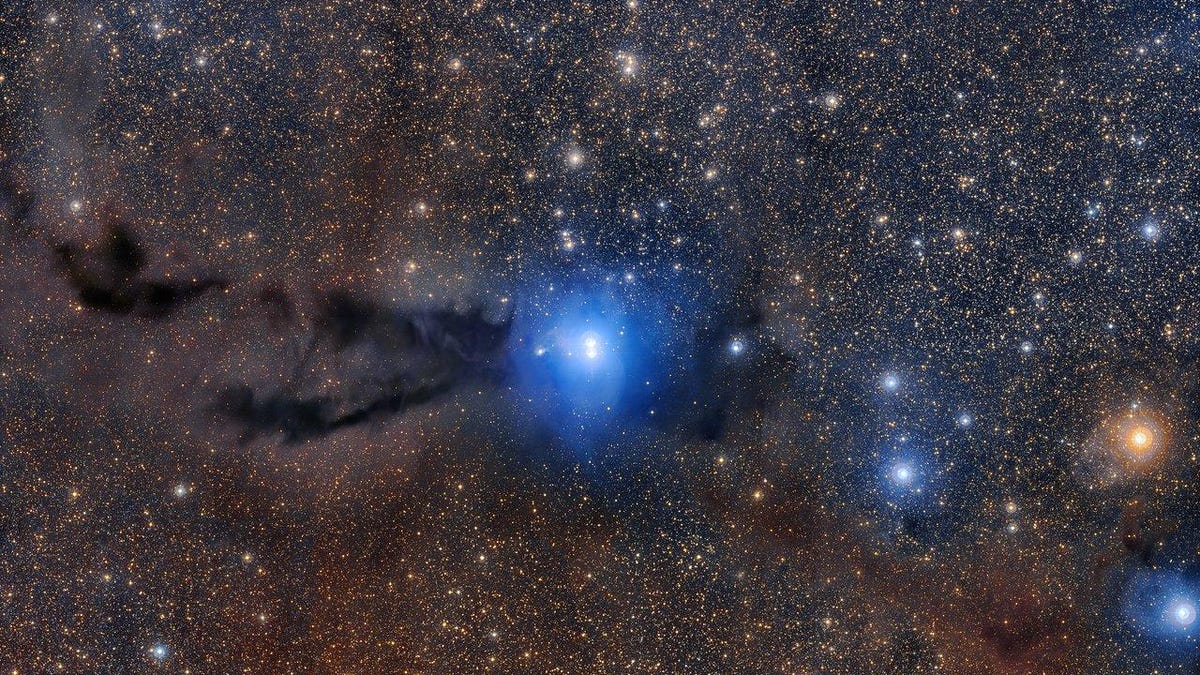Stunning shot captures stars being born not (too) far from Earth
A photo captures an active star-forming region only 600 light years away in breathtaking detail.

The star-forming region Lupus 3 is only 600 light years from Earth.
Looking up at the sky, it's easy to assume that the sun and stars have always been there. But the truth is that new stars are just being born not too far away from our little corner of the universe.
The above photo shows the Lupus 3 star-forming region in the constellation Scorpius, which is only 600 light years away. While that's a distance that may be nearly impossible for humans to traverse, it's actually rather close when you consider that our Milky Way galaxy stretches 100,000 light years across.
What looks like black clouds of smoke billowing across the center of the image are actually clouds of dust and gas called a dark nebula where stars are actively being born. The pair of bright blue stars at the center of the image are two very young stars that are just beginning to burn hot and bright enough to sweep away the similar clouds of dust and gas that once obscured them from our view.
The highly detailed image above was taken with telescopes at the European Southern Observatory, based in Chile.

